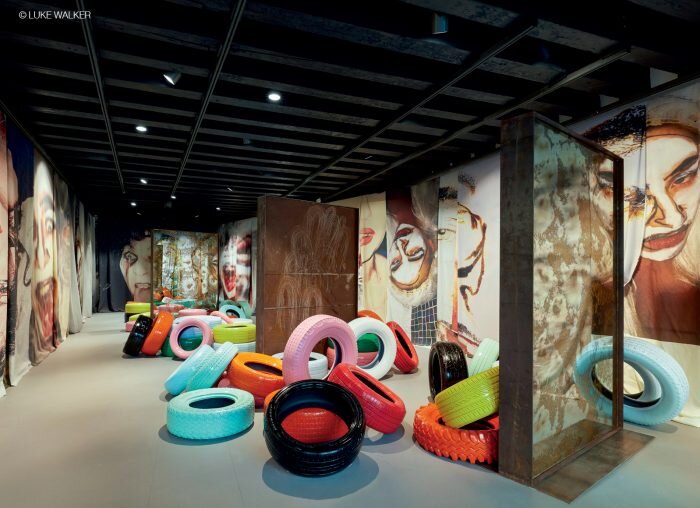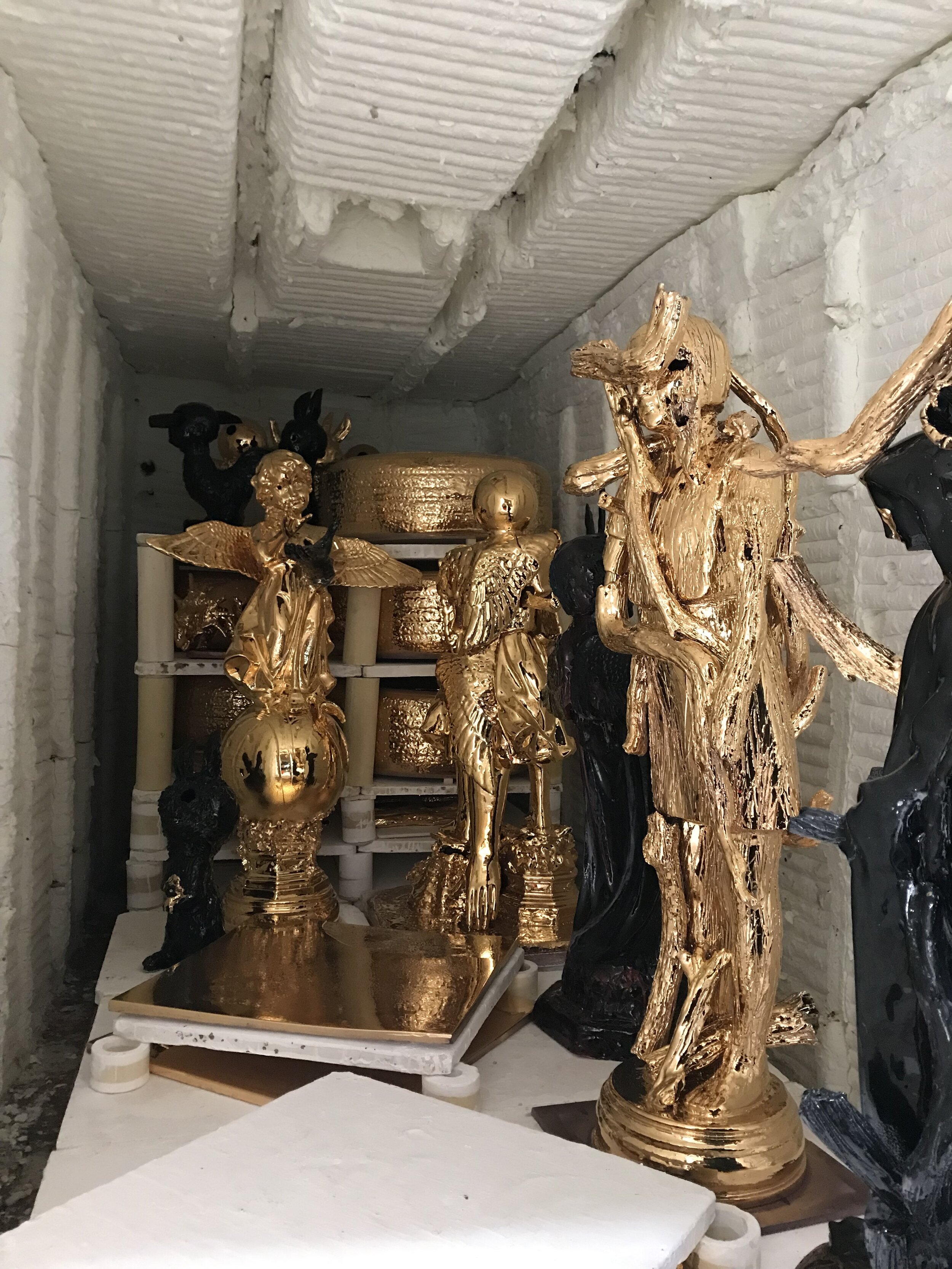renata morales in conversation
with executive director peter doroshenko
What have you been working on in the last year?
I presented a large exhibition over two galleries in Venice during the Biennale and mounted two exhibitions in Guadalajara and one in Montreal. Most of the work that I've been showing was made with Ceramica Suro. I've also been working on some sculptural lighting for a Hotel project in Canada, new drawings and prints for a streetwear label project and some paintings for an exhibition in Mexico City. Due to COVID, many things have halted, but I draw every day.
What has been the interest in making your drawings? Is it a precursor to your sculptures?
Drawing is at the core of my practice. Everything I do stems from drawing, though my sculpture process has been influencing my drawing over the past year.
Which artist or group of artists have influenced you the most?
I am a massive music fan. Most of the artists that have influenced or inspired me are musicians, some of them my friends, and I work on their projects.Artists inspire me for different reasons, some for their ideas and some for their process.
Pierre Soulages, Louise Bourgeois, El Anatsui, to name a few. I am influenced by several Mexican artists- Jose Guadalupe Posada was a great precursor of street art, his work has inspired me since I was very young. Also, the fantastic and almost obsessive work from "outsider" artists Ferdinand Cheval and Henry Darger. For Contemporaries - pretty much everybody at Sadie Coles - Lately, Alex da Corte and Jordan Wolfson ( I have yet to watch Split Earth )
In a league of her own - Rei Kawakubo's whole body of work has been an important force and presence for the arts in general. Independently or in collaborations and initiatives, such as Dover Street Market, I highly respect and admire her.
How has your work evolved in the past three years?
I have developed new perspectives through my drawing and painting practice. I have learned more about electronics and mechanics as well. Combining these techniques across disciplines has set me on a new path that I have applied to my sculpture and textile work. This allows me to plan the creation of complete landscapes or more immersive environments.
How did ceramics integrate into your studio practice?
Ceramics form part of my roots. Growing up in Mexico, I was exposed early and always remained interested in the vast artisan works and folkloric traditions that are shared through generations.I was able to incorporate ceramic sculpture into my practice because of Ceramica Suro, which allowed me to have a studio in Guadalajara in addition to my Canadian spaces. At the factory, Jose Noe and his team have been able to push the boundaries in ceramic production stemming from the traditional ways of the past and opening a whole new - and almost limitless-world of possibilities.
When you are in your studio, do you work with the idea of creating a series of works or possibly for a specific project?
I tend to be very focused when developing work for specific projects, I am quite disciplined and become completely absorbed by everything it involves to achieve each one. I spend the rest of my time doing personal research, which involves drawing and painting.
What has been the underlining story for your most recent sculptures?
The search for identity and belonging in what has been my nomadic existence.Transformation.My relationship with my birthplace, Mexico, it's past and it's present, and the artisans I get to work with and how they live.I am very interested in humanity and what it represents, from kindness to violence and our attachment to the environment seen through the eyes of how we were brought up or the lives we lived so far.These stories morph into different monsters and fantastical characters that I then sculpt. The girl- in all its forms- being the most recurring one.
What have you been reading as part of your research for your current work?
I listen to audio-books while I work. I finally took up The Fountainhead by Ayn Rand, El Otoño del Patriarca from Gabriel García Màrquez and revisited Crime and Punishment by Dostoyevsky.
My colleagues at Ceramica Suro got me into Relatos en el Campo ((Historias de Horror) podcasts, I listen to these when I am abroad for too long and get Saudade for working together again.
Who do you reach out to for critical feedback?
Josh Olson, who can be brutal but always in a constructive way Jose Noe Suro from Ceramica Suro. My best friend Clayton Evans, who is an incredible talent and highly cultured and informed across different disciplines. He is very generous but also a slayer.I like discussing with gallerists as well, and getting their pragmatic view on things.
What are your next steps in the studio? What are you focused on?
Exhibiting, producing and collaborating - in these current times - Staying alert and informed, open and nimble.
about renata morales
Born in Mexico City to free-thinking parents with an obsession for water, Renata Morales grew up in constant movement and spent her childhood in Mexico, France, Texas, and finally rural Quebec. These journeys marked her in two significant ways. Early on, they awoke in her an animated inner life which fueled her artistic production and brought to life strange visions from within. Second, all the changes left her with an outward yearning for the complicated human soul. As a multimedia artist, Morales' practice spans different mediums, from drawing to painting, costume, textile, and object design, to most recently ceramic sculpture in Guadalajara, Mexico.
Renata Morales: Inane and Mundane Evolutionary Tales of Fear Love and Horror is made possible with lead support from Rodger Kobes and Michael Keller and the generous support of LALO, Canada Council for the Arts and José








